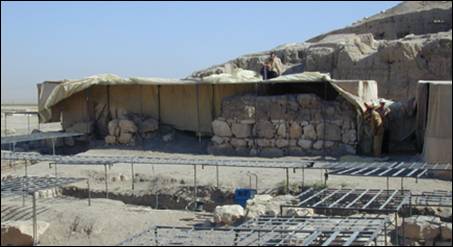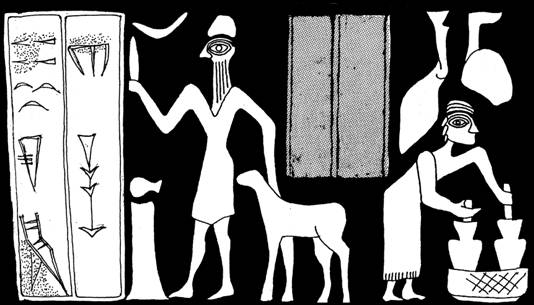 Back from the coffee break. Now we have my old professor at UCLA presenting a paper, Giorgio Buccellati. He discusses the Urkesh Global Record, a real-time publication system of the portable finds from the ongoing excavation at Tell Mozan—I'm an alumnus of that dig myself (1988). The royal palace they uncovered dates back to 2250 BC. A temple (late Chalcolithic-1300 BC) was built on a terrace next to a plaza. The recording system is very extensive and there is an auditing process. The entries can then be incrementally added to as items are studied typologically. The great bulk of the finds consists of ceramic sherds and bone. The database allows for immediate publication of finds as lots of details were immediately entered (stratigraphical, functional).
Back from the coffee break. Now we have my old professor at UCLA presenting a paper, Giorgio Buccellati. He discusses the Urkesh Global Record, a real-time publication system of the portable finds from the ongoing excavation at Tell Mozan—I'm an alumnus of that dig myself (1988). The royal palace they uncovered dates back to 2250 BC. A temple (late Chalcolithic-1300 BC) was built on a terrace next to a plaza. The recording system is very extensive and there is an auditing process. The entries can then be incrementally added to as items are studied typologically. The great bulk of the finds consists of ceramic sherds and bone. The database allows for immediate publication of finds as lots of details were immediately entered (stratigraphical, functional).  They also make sure that the excavated walls which are at least partially mud brick are preserved by constructing removable covers. Even after 20+ years, the walls haven't deteriorated. They adhere to an incremental publication philosophy. They have Syrian students (5 currently) on the dig too. He applied for a grant inside UCLA for the website. Archaeological websites that are recognized and used a lot are usually presenting data, he also wants to provide an argument, matters that are less pure data. The web environment also allows to make that argument in innovative ways that can't be done on paper. So it should get the same respect so to speak as paper publications. A colleague pointed out the website Architecture, Restoration, and Imaging of the Maya Cities of Uxmal, Kabah, Sayil and Labná - The Puuc Region, Yucatán, México. During the discussion, Wellman is offering the template of his condition survey database (CARS) to use freely for any colleague (open source!).
They also make sure that the excavated walls which are at least partially mud brick are preserved by constructing removable covers. Even after 20+ years, the walls haven't deteriorated. They adhere to an incremental publication philosophy. They have Syrian students (5 currently) on the dig too. He applied for a grant inside UCLA for the website. Archaeological websites that are recognized and used a lot are usually presenting data, he also wants to provide an argument, matters that are less pure data. The web environment also allows to make that argument in innovative ways that can't be done on paper. So it should get the same respect so to speak as paper publications. A colleague pointed out the website Architecture, Restoration, and Imaging of the Maya Cities of Uxmal, Kabah, Sayil and Labná - The Puuc Region, Yucatán, México. During the discussion, Wellman is offering the template of his condition survey database (CARS) to use freely for any colleague (open source!).Update: You can contact Howard Wellman by email at wellmanconservation@comcast.net.

